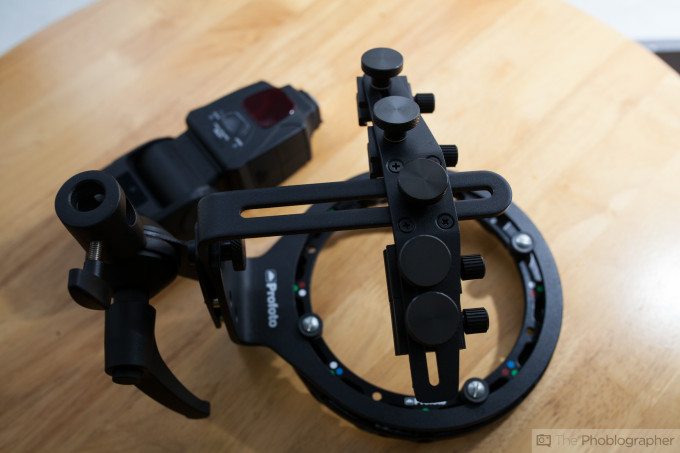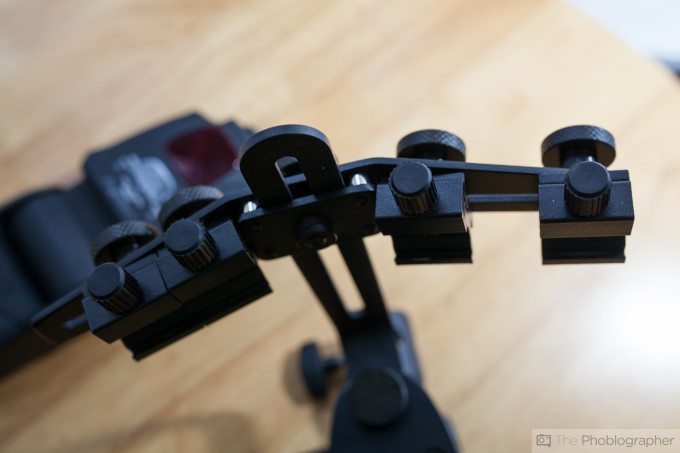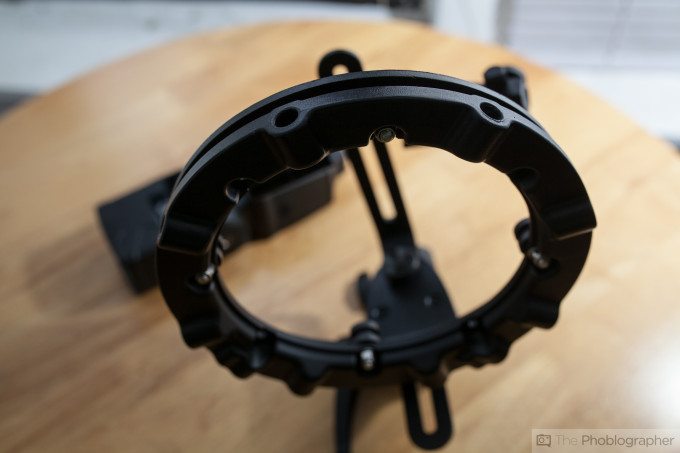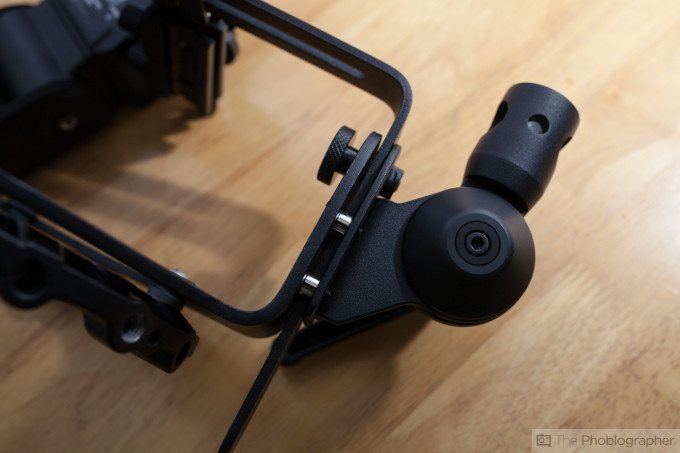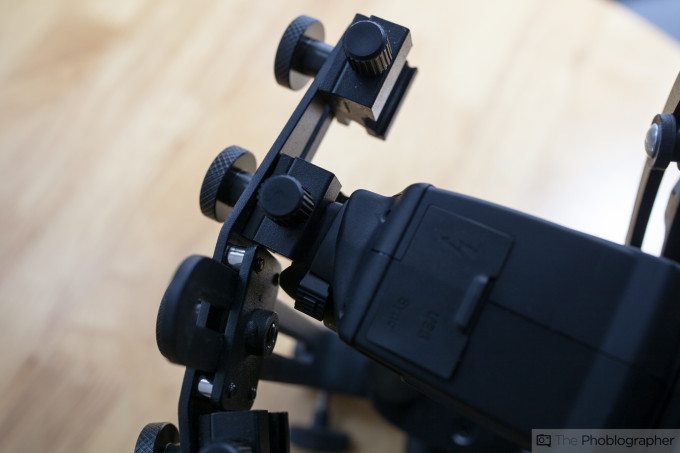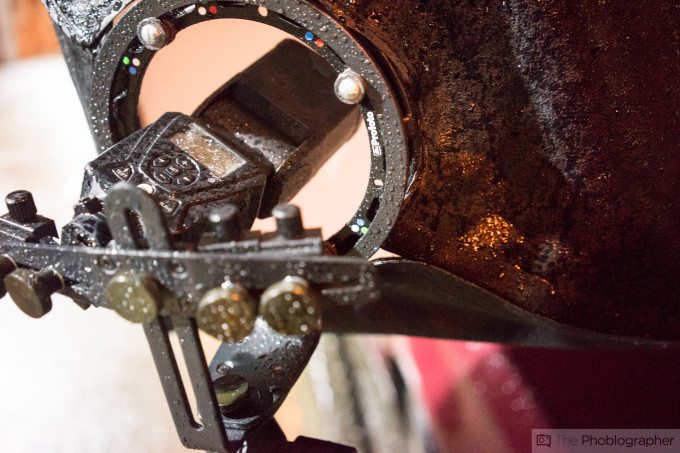No, this isn’t the frame of the next starship Enterprise. Rather, it is a speedring. Profoto released its speedring specially designed to be used for Speedlites and hot shoe flashes earlier on this year. And while many companies out there have their own, Profoto is a company that has always thought a bit differently from the others. This mentality has positioned them as a leader in the overall photo industry when it comes to lighting.
And while this Speedring has a lot going for it, its practicality in real life isn’t always so peaches and cream.
Pros and Cons
Pros
– One of the best built speedrings we’ve held
– Innovative way to putting lots of hot shoe flashes into a softbox
Cons
– A tad heavy
– Connections aren’t always the most secure no matter how hard you try.
Gear Used
We used the Profoto Speedlite Speedring with a Profoto 3×4 RFi Softbox, Phottix Mitros+ flashes and Lumopro LP-180 flash. PocketWizard Plus III transceivers were also used.
Tech Specs
Specs taken from the B&H Photo listing of the product.
- Holds up to 2 Speedlites
- RFi Color Coding for Easy Setup
- Large Ergonomic Handle
- Braked Tilting Adjustment
- Easy Attachment of Radio Remotes
Ergonomics
Profoto’s Speedlite speedring has four ways of mounting flashes, and the image above shows them. They are little clamps that hold the flash straight into the box instead of making it set into an L shape. These clamps can be tough to work with sometimes and aren’t always the most secure.
The clamps can also be moved up down and around for better overall softbox coverage.
Like any other Profoto speedring (or any speedring that is) there is a giant circle with holes for you to put the softbox rods into. The speedring rotates and spins around for easier positioning of the softbox as well.
To mount the speedring to a stand, Profoto gives you this positionable female connector. On top of this is another section that lets you bring your flashes closer into the softbox or further out depending on your needs and how many flashes you plan on connecting.
Due to the design of most flashes, we would recommend putting them in sideways and then ensuring that those clamps are tighter than security in China. During a shoot, we actually had a flash fall out and into a softbox. In that moment, I panicked a bit.
Of any part of the speedring, this is the section that Profoto can improve the most.
Build Quality
Once again, this thing is solid. If someone tried to rob you on a set, know very well that you’d have a weapon with this speedring. Indeed, this is overall how all speedrings should be designed sans the attachment clamps. For those, we believe that Chimera actually offers a better option.
Ease of Use
When it comes to mounting the softboxes into the frame, it isn’t more of a tedious problem than normally putting a softbox onto a speedring is. What’s nice about Profoto’s ring though is that it lets you rotate the softbox a tad: which on a set works out quite well. Once again though, we really wish that it connected to the speedlites better.
Here are three images that we shot with an RFi softbox and speedlites.
Conclusions
We really, really wish that this speedring was perfect. In fact, it nearly is, but we feel that someone neglected to design the clamps to hold to flashes in place better. And as we experienced, this can lead to potential problems.
For the moment, we need to recommend that you look at other options or go to Profoto’s option and switch the clamps out to others.
Please Support The Phoblographer
We love to bring you guys the latest and greatest news and gear related stuff. However, we can’t keep doing that unless we have your continued support. If you would like to purchase any of the items mentioned, please do so by clicking our links first and then purchasing the items as we then get a small portion of the sale to help run the website.
Also, please follow us on Facebook, Google+, Flickr and Twitter.


